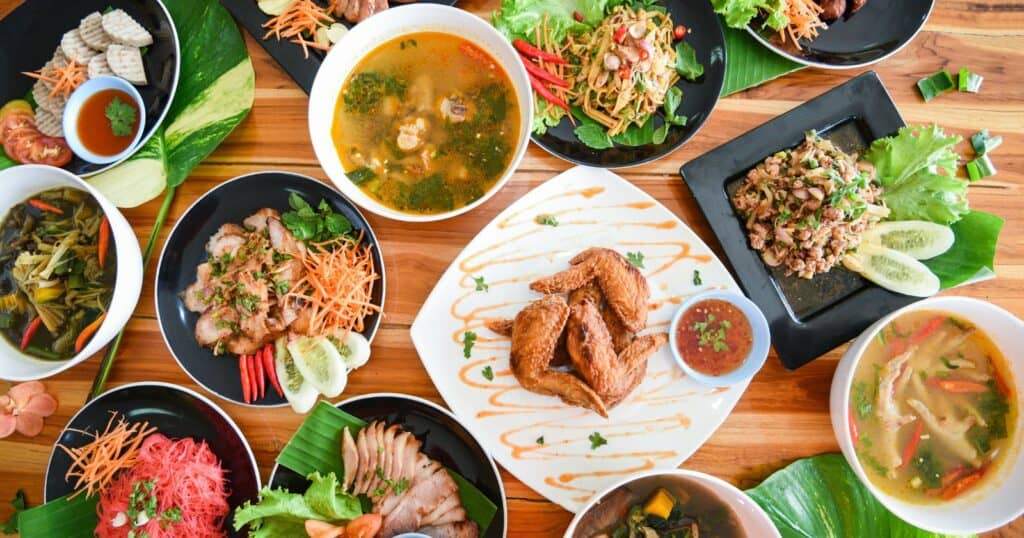Do you envy those who can easily handle the fiery heat of habanero peppers or extra spicy buffalo wings? While everyone has different natural
The key is gradually and systematically exposing your tastebuds to incrementally spicier fare. This allows your mouth to build up a tolerance through a process called capsaicin desensitization. So how exactly can you safely raise your personal
Raising your
The full article covers topics like assessing your starting tolerance, specific training techniques, common mistakes, health considerations, and the exciting culinary potential of pushing your spicy boundaries. Equipped with the right strategies, your journey to
What Exactly is Spice Tolerance?
Your personal spice tolerance refers to the maximum level of spiciness you can comfortably handle before physical discomfort sets in. Those with low tolerance experience burning, sweating, or stomach distress more easily.
The key is recognizing everyone’s limit is different based on factors like:
- Genetics – Number of heat receptors
- Upbringing – Early exposure to
spice - Frequency – How often spicy foods are eaten
- Physiology – Sensitivity of mouth and digestive tract
With purposeful, gradual training, you can raise your capsaicin comfort zone and enjoy spicier meals. But accept that extremely hot peppers may always be beyond your abilities. Knowing your unique limits is key.
How Spice Tolerance Develops

The burning sensation of spicy food comes from compounds called capsaicinoids, mainly capsaicin, found in chili peppers.
When consumed, capsaicin binds to sensory neurons in the mouth that detect heat and irritation. This triggers signals of burning, even though no actual damage occurs.
Over time, repeated exposure to capsaicin can make these sensory nerves less reactive through a process called desensitization. As nerve signals adapt to the
Think of it like strength training – you have to gradually work up to lift heavier weights. Similarly, you can condition your mouth to handle more heat by slowly ramping up the
Assessing Your Starting Spice Tolerance
Before training your
- Note your reactions eating mildly spicy foods like chili powder or jalapeños.
- Pay attention to at what point burning, sweating, or discomfort sets in.
- Try wasabi – it offers quick heat that dissipates fast.
- Use the Scoville scale to identify peppers within your current range.
- Avoid overwhelming your senses initially. Go slow!
Be honest about reactions so you can track improvements through training. Accept current limits before pushing them higher.
Training Techniques to Raise Tolerance
Once you know your starting level, you can begin tailored training to increase your
Gradual Exposure
- Start with small amounts of mild spices like paprika.
- Slowly increase quantity and frequency.
- Periodically have an extra spicy meal to push your limits.
Incremental Increases
- Add a pinch more cayenne or chili flakes to your regular recipes.
- Increase the sprinkle size over weeks and months.
- Occasionally try a new spicier dish.
Mixing Spices
- Combine mild and moderate spices to find your optimal balance.
- Slowly shift ratio towards hotter seasonings.
- Use turmeric, cumin, garlic to mellow heat.
Stay Hydrated
- Drink water during spicy meals to ease discomfort.
- Helps wash capsaicin particles off sensitive receptors.
- Prevents compounding
spice issues like dry mouth.
Helpful Habits for Raising Tolerance
Implementing some key practices will facilitate a smooth, safe tolerance transition:
- Wait until any irritation totally subsides before increasing
spice further. - Rinse your mouth with non-acidic fluids between spicy exposures.
- Have cooling foods on hand like yogurt or milk to extinguish heat if needed.
- Avoid extreme extract sauces – capsaicin crystals are too concentrated.
- Know your personal limits – accept some people tolerate more heat than others.
- Stop immediately if discomfort becomes severe. Don’t push through pain.
With small incremental steps and attentive habits, you can condition your mouth for more
Common Mistakes that Backfire
Eagerness to level up your tolerance can backfire. Avoid these common pitfalls:
- Starting with extremely hot peppers – too big a leap to handle.
- Consuming large amounts of high-heat foods too quickly – pacing is key.
- Ignoring warning signs of irritation or inflammation – your body needs recovery time.
- Comparing your progress to others – focus only on your own journey.
- Choosing extracts with concentrated capsaicin – can overwhelm tastebuds.
- Neglecting proper hydration – exacerbates
spice discomfort.
With patience and self-awareness, you can build heat tolerance while avoiding health impacts or discouragement.
Health Considerations Around Spicy Food
While training your
- Digestive conditions aggravated by irritation like GERD or IBS.
- Existing mouth/throat inflammation or ulcers.
- Habit-forming personality that could lead to excess.
- Interactions with medications – ask your doctor.
As with any lifestyle change, be thoughtful about your unique circumstances before increasing
The Joys of Spicy Food
Embarking on a
- Complex layers of taste in spicy ethnic dishes.
- Endorphin thrill some pepper lovers crave.
- Metabolism and weight management benefits.
- Capsaicin’s antimicrobial properties.
But most importantly – food that makes your mouth dance with joy!
By gradually exposing your tastebuds, almost anyone can learn to better appreciate the nuances of peppery heat and
Soon, you may find more flavors becoming comfortably accessible, letting you confidently order the vindaloo curry extra hot or ask for that ghost pepper wing challenge with excitement rather than fear. The spicy world awaits!
Sources
- McGill University Office for Science and Society: Why some people tolerate spicy foods better than others
- PepperScale: The Hottest Peppers In The World (Updated for 2022)
- PepperScale: Too Hot? Building Your Spicy Food Tolerance
- Pfizer: Bodily Functions Explained: Spicy Food Reaction
- Pennsylvania State University Science in Our World: What Causes People to Have Different Spicy Food Tolerances?
- The New York Times: Can’t Take the Heat? A Taste for Spicy Foods Can Be Learned
- YouTube: 43% of Americans Like to Spice Up Their Lives by Dabbling in Zesty Fo





